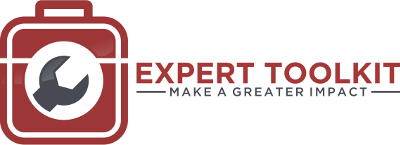The power of the 7S Framework
The 7S Framework, also known as the McKinsey 7S Framework, is a tool that helps organizations align their various elements to improve overall performance. It is a holistic approach that considers various internal and external factors that impact an organization's ability to achieve its goals.
The 7S Framework was first developed by Tom Peters and Robert Waterman of McKinsey & Company in the early 1980s. It was first introduced in their book, "In Search of Excellence: Lessons from America's Best-Run Companies." The authors observed that many of the companies they studied shared common characteristics, which they grouped into seven categories: strategy, structure, systems, shared values, style, staff, and skills.
The 7S Framework comprises seven interrelated elements:
- Strategy: The overall direction and plan of the organization.
- Structure: The formal and informal organization of the company, including its hierarchy, departments, and reporting relationships.
- Systems: The processes and procedures that govern the organization, including its policies, procedures, and information systems.
- Shared values: The values and beliefs that guide the organization, including its culture, ethics, and mission.
- Style: The leadership style and approach of the organization, including its decision-making process and communication style.
- Staff: The human resources of the organization, including its employees and management team.
- Skills: The knowledge and capabilities of the organization, including its expertise and technology.
To use the 7S Framework, follow these steps:
- Identify the current state of each of the seven elements in your organization.
- Determine the desired state for each element.
- Identify gaps between the current and desired states.
- Develop a plan to close those gaps and align the elements.
- Implement the plan and monitor progress.
- Make adjustments as needed.
The 7S Framework is best used in situations where an organization is experiencing a significant change, such as a merger, acquisition, or major shift in strategy. We can also use it as a regular check-up to ensure that all elements of the organization align and work towards the same goals.
One example of the 7S Framework in action is the merger of two large pharmaceutical companies, XYZ and ABC. The merger presented several challenges, including different corporate cultures, conflicting management styles, and duplication of resources. To address these challenges, the companies used the 7S Framework to align their elements and improve overall performance. By involving all stakeholders, setting clear objectives, and developing a plan for alignment, the merged company overcame the initial challenges and achieved improved performance.
Implementing the 7S Framework can take a significant amount of time and effort. It may take several months to complete a thorough analysis and develop a plan for alignment. Ongoing monitoring and adjustments will also be required to ensure that the elements remain aligned.
The 7S Framework can be complex to use and requires a certain level of expertise to implement effectively. A thorough understanding of the organization and its elements is essential, as well as the ability to analyze and develop a plan for alignment. It is also important to have strong leadership and communication skills to involve all stakeholders in the process and effectively communicate the plan and progress to them.
The benefits of using the 7S Framework include improved performance and alignment of all elements of the organization, which can lead to increased productivity, efficiency, and effectiveness. It can also help organizations overcome challenges and achieve their goals more effectively.
However, the 7S Framework has limitations. It is geared towards larger and more complex organizations and may not be suitable for smaller organizations. It requires a significant investment of time and resources to implement effectively.
Common mistakes organizations make when using the 7S Framework include not involving all stakeholders, not fully understanding the current state of the organization, focusing too much on one element at the expense of others, and not having a coherent plan or objectives for alignment. To avoid these mistakes, it is important to involve all stakeholders, take a holistic approach, set clear objectives and develop a plan for alignment, and monitor progress and make adjustments as needed.
To get started with the 7S Framework, we suggest:
- Assess the current state of your organization using the 7S Framework
- Set clear objectives and develop a plan for alignment
- Involve all stakeholders in the process
- Monitor progress and make adjustments as needed
- Communicate the plan and progress to all stakeholders.
For more information on other powerful tools and techniques, we recommend checking out our Management Consulting Toolkit.
Share this article
- Tags: Best Practices, Business Consulting, Leadership, Management Consulting Tools, Stakeholder Management, Strategy, Transformation
